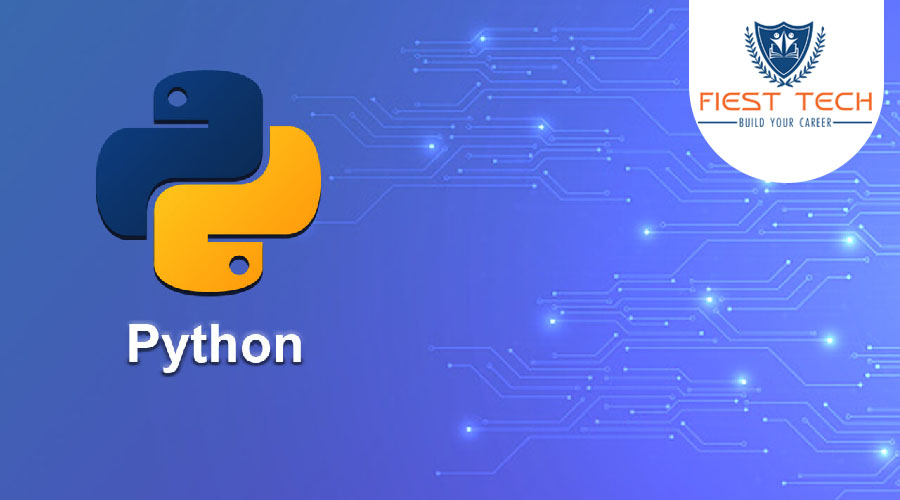Consider a state of affairs the place you are working with giant data units or performing numerous calculations. In such a case, the optimal alternative for memory and efficiency would likely be the double-star operator. The elevated efficiency may lead to a extra streamlined execution course of, doubtlessly reducing the computational burden in your system. Performance : File dealing with operations in Python will be slower than different programming languages, especially when dealing with giant files or performing advanced operations. What's Python file dealing with? Python file dealing with refers back to the means of working with files on the filesystem. It includes operations such as reading from files, writing to files, appending knowledge and managing file pointers. ] corresponds to the values. ] was used to stand for the values. Loops are often used to iterate and manipulate sequential knowledge types. The for loop in Python is very just like different programming languages. We will use break and proceed statements with for loop to alter the execution. Nevertheless, in Python, we are able to have non-obligatory else block in for loop too. I hope you have gained some attention-grabbing concepts from the tutorial above. If in case you have any questions, tell us within the feedback beneath.
Thread Security: When utilizing custom capabilities in a multi-threaded surroundings, guarantee your features are thread-protected. Think about using connection per thread.For extra advanced database operations, you may want to take a look at Python SQLite3 execute() Method Information or study committing adjustments. SQLite's performance with customized Python functions. It lets you implement specialised calculations and operations straight in your SQL queries. We can get out of the for loop using the break assertion. It will terminate the for loop execution and the code block won’t be executed for the remaining elements of the iterable. This is helpful when we discovered what we are in search of and don’t have to process different parts of the iterable. Now, if you're interested by knowing tips on how to implement information science ideas with Python, you can go through this blog on Python Information Science tutorial. Additional, check out our affords for the Python certification course. You too can go through these free Python Coding Interview Questions ready by business consultants.
It is important to understand Python's elementary concepts to put it to use efficiently. Variables are used to hold data in Python and do not should be explicitly declared. A variable's data type is routinely ascertained by taking a look at the worth that is assigned to it. Control structures handle the movement of execution in a program. Object-oriented programming, which divides code into classes and objects, is supported by Python. Python has sturdy error and exception dealing with options that ensure this system can deal with unexpected circumstances politely. The following desk lists the line plot types. Do not forget that you may as well use these kinds with other sorts of plots. For example, a scatter plot can use these types to outline each of the info factors. When in doubt, attempt the types to see whether they’ll work together with your particular plot. It’s sort of wonderful to suppose that IPython supplies you with magic, but that’s exactly what you get with the magic features. Most magic features start with either a % or %% sign. Those with a % sign work within the setting, and those with a %% sign work on the cell level.
Word: For more info, refer Python Sets. Dictionary in Python is an unordered collection of data values, used to store information values like a map. Dictionary holds key:value pair. Each key-worth pair in a Dictionary is separated by a colon :, whereas each key is separated by a ‘comma’. Be aware: For extra data, refer Python Nested Dictionary. All the pieces in Python is treated as an object so each variable is nothing but an object in Python. A variable may be either mutable or immutable. If the variable’s value can change, the object is named mutable, while if the value cannot change, the object is called immutable. We will be taught the difference between mutable and immutable types in the later section of this article.
Within the Automate the Boring Stuff with Python on-line guide, you will learn about dictionaries, strings, debugging, common expressions and more. If you choose a video format, then you'll be able to go through the YouTube sequence that Al Sweigart put together. In this 12 hour YouTube Edureka course, you will study functions, loops, lists, conditionals, error handling and extra. This course may even speak about profession alternatives in Python and wage expectations for Python developers. On this TechWorld with Nana YouTube course, you will find out about strings, variables, OOP, practical programming and extra. Additionally, you will construct a few tasks including a countdown app and a mission focused on API requests to Gitlab. In Python, you may retailer values to variables. The value of a variable can then be modified throughout the execution of the program. As you possibly can imagine, storing information is important to a computer program. As an example, a typical recreation software retains track of some type of score. Behind the scenes, the score is a variable that's updated based mostly on sure actions. This can be a complete guide on variables in Python.
